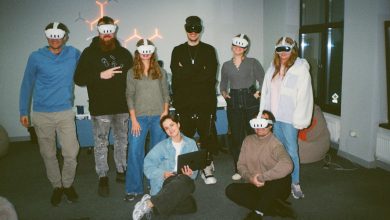The Great Resignation has brought a widespread reimagining of both work and the workplace, and retaining employees is now one of the prime challenges for global organisations.
Employee experience plays a key role in attracting new talent and retaining current employees. Global workplace leaders must ensure their workplace technology enhances the entire employee experience and can straddle the increasingly blurred lines between the physical, digital and human aspects of work.
Offering a Flexible Experience for the Remote Workforce
Technology enablement for remote work is fast becoming a priority, as the pandemic has reinforced the need – and increasingly, the desire – for employees to choose their physical work location. A seamless onsite/offsite work experience is now part of broader enterprise plans for employee experience and engagement and involves enabling an anytime-anywhere-any device (AAA) workplace across modern networks. In addition to classic digital workplace elements such as device management, virtual desktops and service desk support, employee experience and engagement also includes human aspects of work, such as employee empathy, cultural considerations and change management.
A Collaborative Experience for the Gig Workforce
The Great Resignation has turned employees with highly sought-after technical skills into hot commodities. As a result, many employees are choosing to work as independent contractors to ensure they retain control over their work scope, frequency and circumstances. This need for flexibility is increasingly becoming more important than the need for traditional job security.
The resulting growth of the gig economy and the contingent workforce will drive demand for technology that can accommodate people who work for more than one employer at a time. While the technologies that enable such scenarios are currently available, for example, cloud-based file sync and share, unified communications and collaboration, virtual desktops and more, the scope of their use will increase. For example, enabling a part-time worker with remote access and file sharing alone may not be enough. Instead, employers will employ a full array of enabling technologies to maximise employee productivity and engagement with a seamless communication and collaboration experience.
In this new era of the contingent workforce, companies pay employees not only for their skills but also for their time, making uninterrupted workplace technologies more important than employee engagement. A failed virtual desktop session, for example, may result in low employee engagement for a regular employee but will cost more for a gig worker who’s engaged on a pay-per-hour basis.
Gen Z and Gen Alpha Speed Metaverse Adoption
Employee experience will move beyond the physical with the birth of the Metaverse, which will impact all forms of social life and bring more virtualisation of users than ever before, including within the workplace. As Gen Alpha and Gen Z employees, who are increasingly seen as the most influential drivers of the Metaverse, enter and advance in the workplace, organisations will be inclined – even forced – to incorporate these technologies in some form to support and attract new employees.
Virtual reality, avatars and virtual spaces will become an integral part of work, as new firms such as Gather, Teamflow and Virbela create and deliver a virtual office experience to counter the “monochrome” world of video conferencing and collaboration solutions. Concurrently, smaller firms will provide avatar-based learning centers—some are already offering these solutions to support virtual events—while large organisations have also started to incorporate Metaverse-supporting technologies like augmented and virtual realities into training and remote assistance. VR technology will enhance the productivity of in-the-field frontline workers by enabling collaboration with remote experts.
Boosting the Productivity Experience with Unified Communication and Collaboration
While the Metaverse continues to unfold, unified communication and collaboration (UCC) solutions are available now to improve app integration and combat digital fatigue by reducing the number of clicks and the need to continually switch windows. Support for more productivity apps in UCC solutions, such as Zoom, will allow for a better meeting and collaboration experience, and UCC and UCC-as-a-Service (UCCaaS) solutions can help organise an employee’s workday by integrating with solutions such as Microsoft Viva.
Low-/No-Code Experience Boosts – and Requires – Digital Dexterity
Tech democratisation will require smart workplace management. While low-code/no-code solutions are gaining in popularity, they are not yet being used extensively for critical business processes and functions. Instead, enterprises consider them as tools to help tech-savvy line-of-business workers design and automate their processes.
Enterprise IT will need to ensure proper governance, standardisation and self-help support for new citizen developers, but this will require workplace support teams with higher-level skills than those needed to manage regular end-user computing technologies—an extra challenge at a time of skilled worker shortages. Even modern end-user computing technologies are offering low-code/no-code functionalities to automate routine tasks like patch management and file operations, requiring workplace technologists who can think strategically about balancing device/app provisioning and security policies with changing technology democratisation needs.
Offering a Secure Experience
Technologies enabling and enhancing workplace productivity will also need to maintain the required level of cybersecurity while ensuring a high-quality digital technology experience for part-time workers.
Unified endpoint management (UEM) solutions will continue to focus on the increasing number of wearables and Industrial Internet of Things (IIoT) devices entering the workplace. The introduction of 5G and Wi-Fi 6 will positively impact remote work with an increased focus on edge computing and secured access service edge (SASE) management through a single pane of glass. Also, as more enterprise apps are being “SaaSified,” they require secure provisioning and deployment – across devices – for a seamless experience and a contextual zero-trust approach.
Solutions to Measure Experience
Solutions that provide telemetry-based analysis of workplace technology by monitoring application and device performance to predict and prevent failures will play a major role in quantifying the digital employee experience, as enterprises begin to associate business outcomes with workplace technology usage. Experience level agreements (XLAs) beyond app/device performance will also see an uptake in the service of improved employee engagement and experience. XLAs will include parameters to measure employee behaviour changes that increase productivity, digital adoption and measurable business benefits. This analysis may also be used to correlate employees’ digital experience and employees’ digital dexterity with their business unit’s performance and expected business results.
Take IT Out of the Silo
Enterprise IT organisations need to quickly equip themselves with technology and people capable of fostering and managing a new physical, digital and human workplace environment that is more focused on the employee experience than on simply keeping the lights on. To do this, enterprises must look beyond traditional, siloed IT and start deploying technology as a key enabler of employee experience. This will require a new mindset for IT and business leaders as they assess the impact of the workplace technology experience on line-of-business functions. Only when the business and IT are in sync can enterprises make the best use of existing technologies such as UCC and emerging technologies such as the Metaverse to truly transform the future of work.




